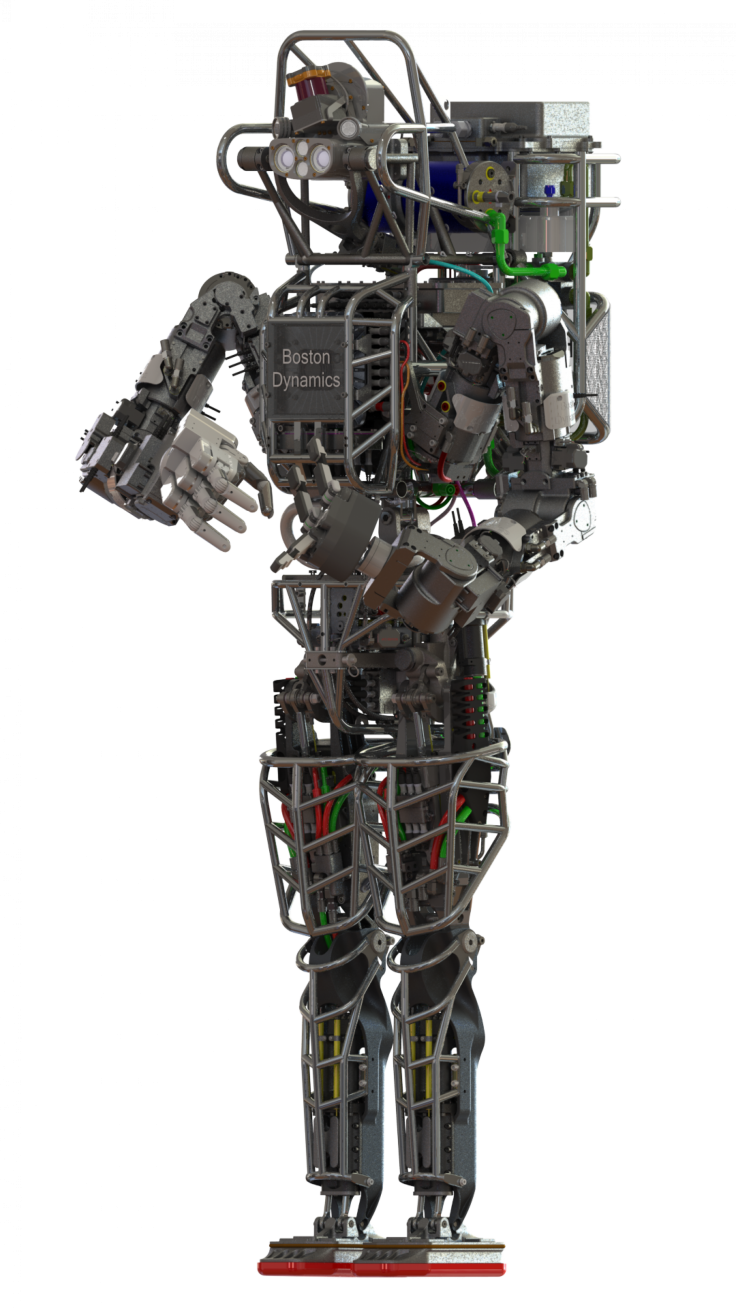Atlas: DARPA Humanoid Robot Makes 'Terminator' Nightmare A Reality [VIDEO]

Apparently the people at the Boston Dynamics for the Defense Advanced Research Projects Agency aren’t familiar with the "Terminator" series. Otherwise, they might have thought twice about their latest creation: a 6-foot-2, 330-pound humanoid robot named Atlas that seems more than capable, if it ever becomes self-aware, of bringing Judgment Day.
The Atlas robot features two fully functional hands with opposable thumbs and three other fingers; Atlas' movements come from 28 hydraulic joints. The robot has a head that uses stereo sensors and LIDAR, a sensing technology that measures distance with a laser. Atlas also has automatic crash protection and an on-board control computer that allows the robot to avoid obstacles and react appropriately to changes in terrain and balance.
DARPA has already distributed more than a dozen Atlas robots to teams that competed in a challenge to develop software that controls the robot. Those teams will compete in the DARPA Robotics Challenge, which kicks off in December.
The goal, according to DARPA, is to build robots more efficient in responding to natural disasters. Rather than small machines that can help inspect disaster areas and give first responders some situational awareness, DARPA wants response units that can actually navigate urban environments and help out in a disaster.
On a related note, researchers at North Carolina State University have discovered a method for 3-D printing liquid metals. The metal remains liquid at room temperature, allowing it to be easily bent and arranged. The metal solidifies when it comes in contact with air.
It could be important in the creation of bendable electronics, but it will most likely lead to a T-1000 Terminator. When are we going to learn to heed the cautionary words of James Cameron?
If DARPA hasn’t learned that an army of humanoid robots will eventually rule us all, at least they’ve realized the importance of robots being able to go down stairs.
Maybe we should be optimistic about our future robot overlords. Maybe the developers in the Robotics Challenge will program Atlas to learn from human contact, eventually being able to properly use “hasta la vista, baby,” and teach us valuable lessons about humanity. Do the right thing, programmers.
© Copyright IBTimes 2024. All rights reserved.












